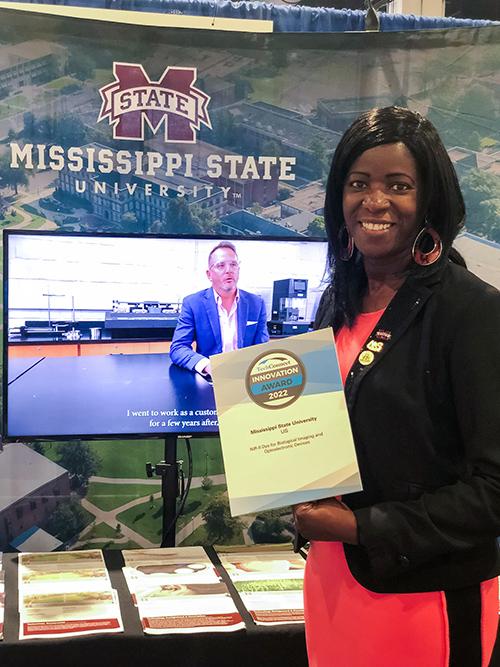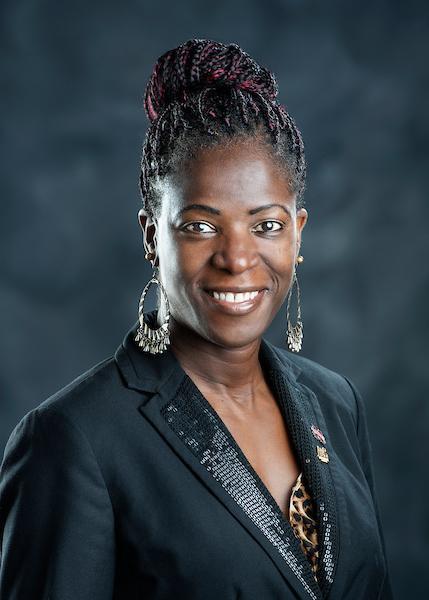Illuminating Innovation: Dr. Colleen Scott’s Research on Emissive Dyes for a Brighter Future
Story by Greta Allen
Dr. Colleen Scott’s journey into the world of emissive dyes was not one she initially set out on but rather a path shaped by opportunity and curiosity. Now an associate professor at MSU’s Department of Chemistry, Scott is leading research that could revolutionize the way we detect and treat diseases, particularly cancer.
At MSU, Scott found an environment full of collaboration and facilities to advance her research. Her team has made significant strides in developing new protocols for synthesizing and applying emissive dyes. One of the most exciting aspects of her research involves designing dyes that respond specifically to certain biological environments, in particular, cancer cells.
“So, we're looking to tweak the dyes so that they would respond only in environments where you have cancer. That's the goal where we can stain the cancer cells, so the surgeons have a better idea of where the cells are when they're doing surgery,” said Scott.

This breakthrough is key for helping surgeons and doctors identify cancer and notify if any cancer is left in the patient without having to conduct invasive surgery or chemotherapy. Scott explains, “Cancer cells are known to be more acidic than normal cells, so we’re using pH as a sensor to make the dyes light up in the presence of cancer.”
Beyond medical applications, Scott’s work has potential implications for other industries as well. Her team is investigating electrochromic applications, such as smart windows, that can change tint based on electrical signals.
“We also are pursuing something called electrochromic applications so you can apply a current, electric field, or voltage to change colors back and forth. They are currently used in what we call smart windows, where they tint the windows during the summertime, so you let in less sunlight. And then you can switch it back during the wintertime so you can let in more sunlight and control the temperature of a building,” said Scott.
Scott remains optimistic about the future of emissive dyes, and the future this innovation has in various fields. A particularly exciting development in her research has been the ability to simplify the dye synthesis process. What once took ten steps can now be achieved in just two. “We were able to cut down the synthetic steps significantly from 10 steps to two which to me was dramatic,” she says. “Now, more people can do it, which means more competition, but it also pushes us to be more creative and stay ahead.”
The motivation behind this project and many others of Scott’s comes from the potential to help people and positively contribute to society. She said, “Just wanting to see how what you're doing can help society, not just from this end but in all our projects, is a big motivator. The big goal or the motivator is how we can change something in the world. Hopefully, at some point in your career, you can come up with something that makes a difference and significantly adds to the scientific community.”


